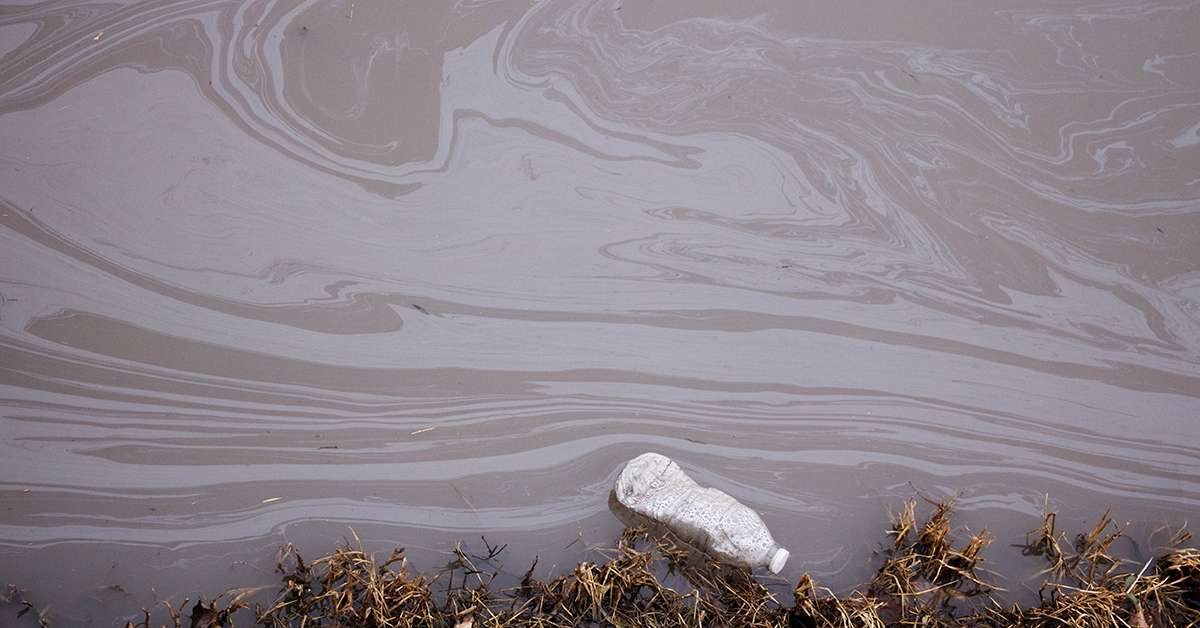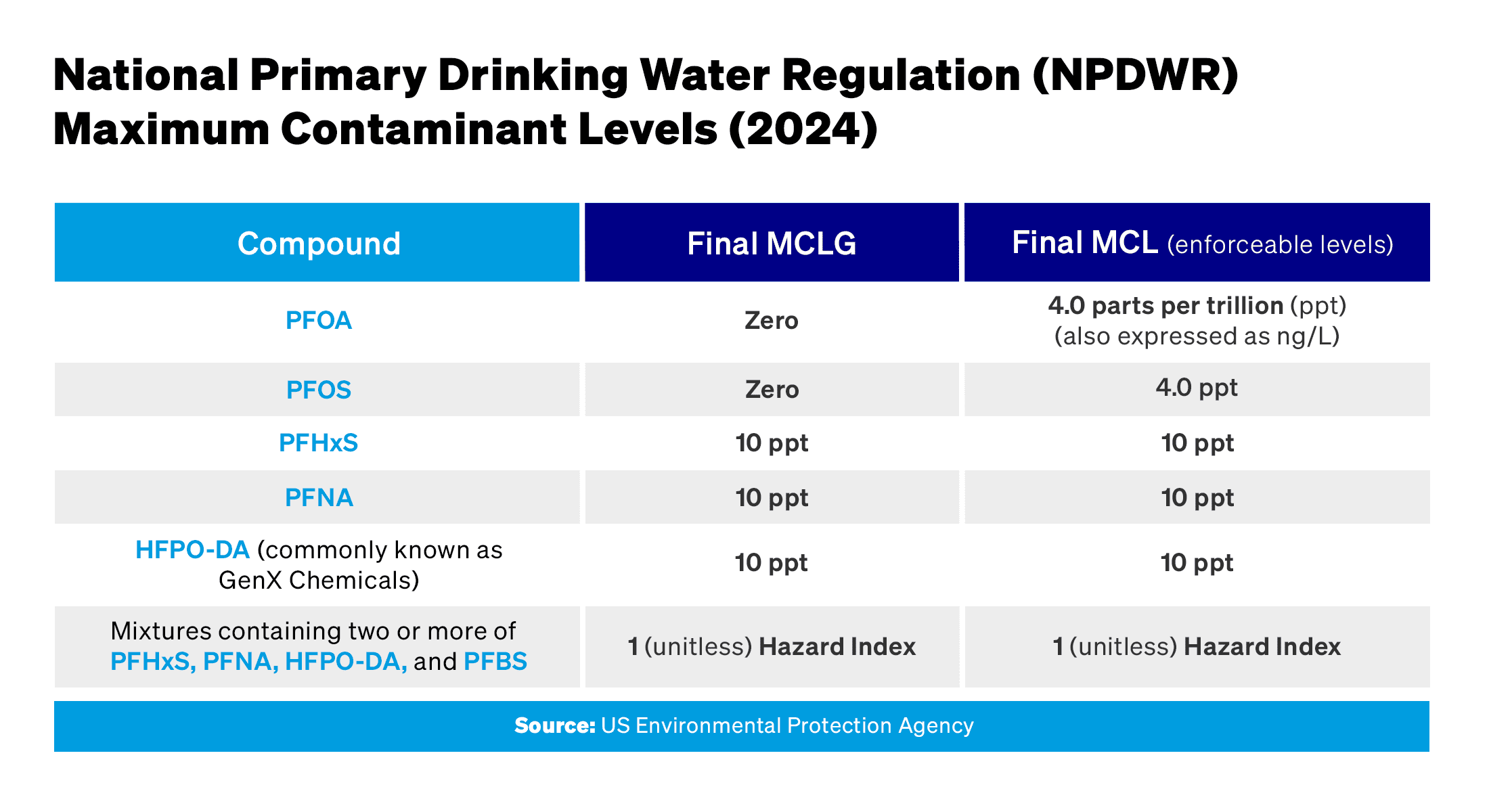News & Insights
The growing concern of PFAS contamination: regulatory updates and future solutions
PFAS is a major global environmental and health concern, with mounting evidence of its hazardous effects on humans and the environment. Governments and regulatory bodies are taking action, and engineers are critical to solving the issue. In this article, we'll cover the latest regulatory updates on PFAS, highlight future solutions, and share how Salas O'Brien is developing to tackle this growing problem.

What are PFAS, and what makes them concerning contaminants?
Per- and polyfluoroalkyl substances (PFAS) are a diverse group of fluorinated chemicals with varying chemical and physical properties. They are an integral part of many useful and life-saving items, such as AFFF firefighting foam used by the military and airports, non-stick coatings on cookware, water-resistant fabrics like rain jackets, umbrellas, and tents, as well as common cosmetics, cleaners, and shampoos.
You might be surprised to learn that PFAS can be found in the blood of almost all residents in the United States and other industrialized countries worldwide. The properties that make these chemicals highly effective in their applications are also the reason they are challenging to dispose of and, consequently, pervasive. As a result, PFAS raise concern because of their persistence and mobility in the environment.
Toxicological studies have shown that even low levels of PFAS exposure can result in detrimental effects such as reproductive and developmental problems, liver and kidney damage, and some forms of cancer. Despite regulations and guidelines aimed at limiting exposure, they remain a significant problem due to their widespread use and lack of alternatives.

What are the current methods for detecting and monitoring PFAS contamination, and how effective are they?
Detection of PFAS has improved significantly in the past decade. The US Environmental Protection Agency (EPA) has developed several analytical methods to detect PFAS, including two methods (EPA 533 and 537.1 version 2) for analyzing drinking water and one method (EPA SW-846 8327) for analyzing groundwater and surface water. Additionally, the EPA has issued a draft method (EPA method 1633) for analyzing various samples, including aqueous, solid, biosolids, and tissue samples, which is expected to be finalized later this year.
To determine the extent and nature of PFAS contamination, the federal and state governments are collecting water and soil samples from various locations across the country. These efforts aim to provide more information on the distribution and concentration of PFAS, ultimately helping to address and mitigate the risks associated with PFAS contamination.
What does the regulatory PFAS landscape look like, and what updates have been made recently?
On April 10, 2024, EPA announced the final National Primary Drinking Water Regulation (NPDWR) for six PFAS. EPA expects that over many years the final rule will prevent PFAS exposure in drinking water for approximately 100 million people, prevent thousands of deaths, and reduce tens of thousands of serious PFAS-attributable illnesses.
Here are the highlights:
- For PFOA and PFOS, EPA is setting a Maximum Contaminant Level Goal (MCLg), a non-enforceable health-based goal, at zero. This reflects the latest science showing that there is no level of exposure to these contaminants without risk of health impacts, including certain cancers.
- EPA is setting enforceable Maximum Contaminant Levels (MCLs) at 4.0 parts per trillion for PFOA and PFOS, individually. This standard will reduce exposure from these PFAS in our drinking water to the lowest levels that are feasible for effective implementation.
- For PFNA, PFHxS, and “GenX Chemicals,” EPA is setting the MCLGs and MCLs at 10 parts per trillion.
- Because PFAS can often be found together in mixtures, and research shows these mixtures may have combined health impacts, EPA is also setting a limit for any mixture of two or more of the following PFAS: PFNA, PFHxS, PFBS, and “GenX Chemicals.

All public water systems have three years to complete their initial monitoring for these chemicals. They must inform the public of the level of PFAS measured in their drinking water. Where PFAS is found at levels that exceed these standards, systems must implement solutions to reduce PFAS in their drinking water within five years.
EPA is making funding available to help ensure that all people have clean and safe water. One billion was made available through the Bipartisan Infrastructure Law to help states and territories implement PFAS testing and treatment at public water systems and to help owners of private wells address PFAS contamination.
What is the outlook for PFAS’ future research and regulation, and what developments can we expect in the coming years?
The detection of PFAS has come a long way, but there is still much to be done. Advancements in methodologies now enable detection at increasingly lower concentrations, making it possible to measure PFAS in parts per trillion. The development and use of more sensitive and accurate detection methods have also played a critical role in guiding the development of regulatory standards and guidelines.
Currently, cleanup technologies for PFAS have been limited to sorption technologies that sequester the contamination without destroying the PFAS. These technologies remove PFAS from water but retain them on the sorption media, which must be dealt with later. However, new technologies that destroy PFAS are in development and being deployed on a limited basis, including supercritical water oxidation and plasma technologies.
The Department of Defense (DoD) is funding research to develop PFAS cleanup technologies from laboratory-scale testing to field-scale testing. As a result, several technologies are now being rolled out as startup companies work to further develop them. The DoD continues to fund a significant amount of PFAS research through universities and technology development companies, some of which is now being implemented in real-world applications.
As the EPA determines the health effects of additional PFAS, regulations will continue to evolve, potentially impacting many industries across North America. For example, several PFAS are proposed to be listed as hazardous substances under CERCLA, which will have a significant impact on affected industries. We also expect to see additional PFAS regulated in drinking water after further studies are completed in the next few years.
How does environmental justice intersect with PFAS?
Low-income and minority communities are more likely to be exposed to PFAS due to factors such as proximity to industrial sites, landfills, and other potential sources of contamination. These communities may have limited access to clean drinking water or resources to mitigate the risks of PFAS exposure.
Environmental justice advocates argue that the response to PFAS contamination must prioritize the needs and concerns of these vulnerable communities. This includes ensuring that affected communities have access to safe drinking water, providing resources to mitigate exposure risks, and involving affected communities in the decision-making process related to PFAS contamination. It also involves ensuring that industries and responsible parties are held accountable for the cost of remediation and cleanup efforts.
In recent years, environmental justice has become an increasingly prominent issue in the context of PFAS contamination, leading to increased attention and action by regulators and policymakers. However, much work remains to be done to ensure that all communities have access to clean and safe environments.
How can Salas O’Brien help public and private clients with PFAS contaminants?
Given the rapidly changing landscape of PFAS policies, regulations, monitoring, and cleanup technologies, it can be challenging for clients to navigate the regulatory process on their own. Salas O’Brien provides programmatic support to clients, offering guidance and expertise throughout the process of addressing PFAS issues.
As regulations and policies continue to evolve, Salas O’Brien stays up-to-date with the latest changes, providing clients with the most current information and solutions to address PFAS contamination. By staying ahead of the curve with engineering expertise, Salas O’Brien helps clients mitigate risks associated with PFAS and achieve regulatory compliance efficiently and effectively.
For media inquiries on this article, reach out to Stacy Lake, Director of Corporate Communications

Andrea Sojda, PMP
Andrea Sojda is a professional consultant with 17 years of experience in managing intricate projects and programs across the Private, Public, and Federal sectors. She specializes in sustainable development, energy transition, environmental justice, community partnerships, natural resource management, operations, and effective stakeholder engagement. Andrea utilizes her unique background in compatible land development, commercial construction, and complex stakeholder management to provide the best solutions for her clients’ most challenging problems. Much of her career has been dedicated to working with communities globally. From her service as a United States Peace Corps Volunteer in Sub-Saharan Africa to her work in developing public-to-public partnerships across America, a consistent theme in her work is building sustainable communities. Currently, Andrea holds the position of Principal, Energy and Sustainability – Federal Market at Salas O’Brien, operating from Northern Colorado.Contact her at [email protected].

Rhiannon Schweitzer, PMP
Rhiannon Schweitzer leads Salas O’Brien’s US Army PFAS program work. With an MA in Global Leadership and Sustainable Development from Hawaii Pacific University and a BS in Environmental Science and Policy from the University of Maryland, Rhiannon brings a wealth of knowledge and a nuanced understanding of environmental sustainability to her role. Her academic background, combined with a strong passion for sustainable development, positions her as a leader in the environmental engineering sector, especially in projects that require innovative solutions and a commitment to excellence. Rhiannon serves as a Project Manager for Salas O’Brien. Contact her at [email protected].